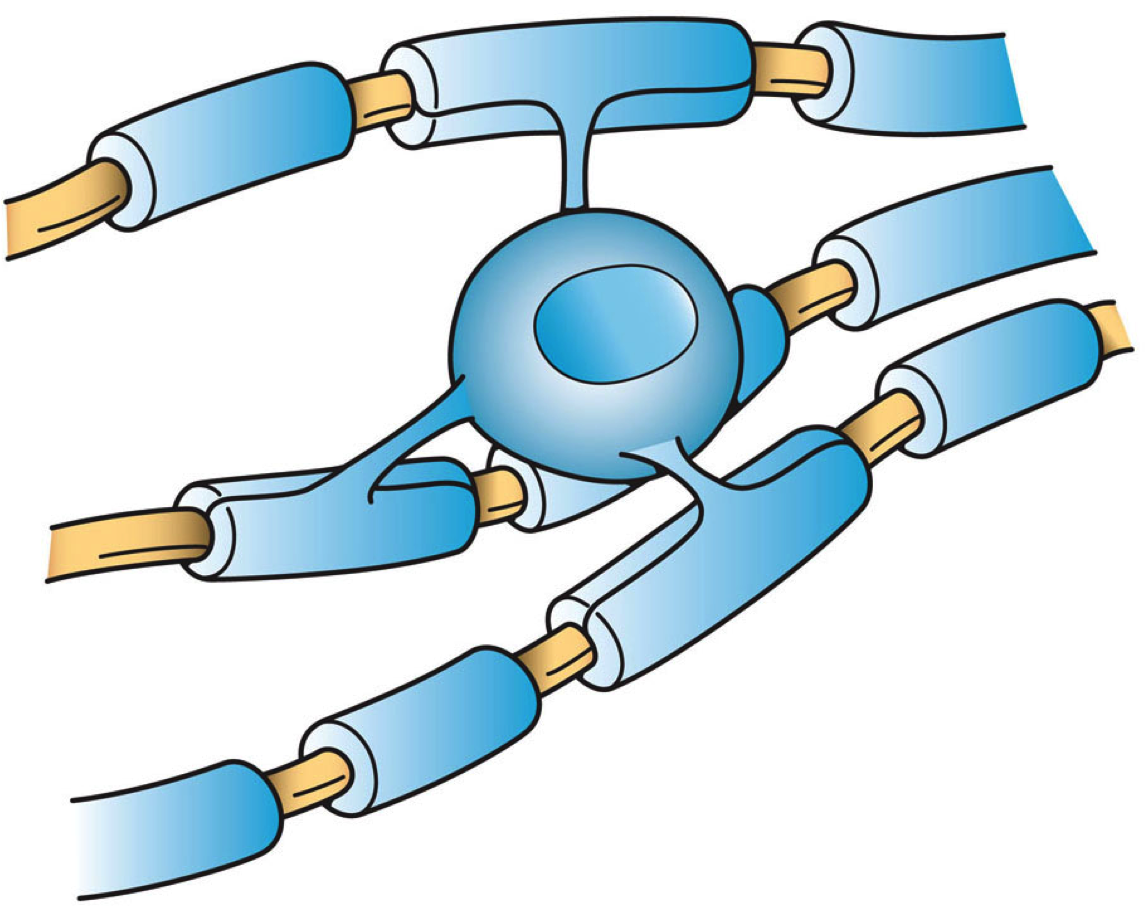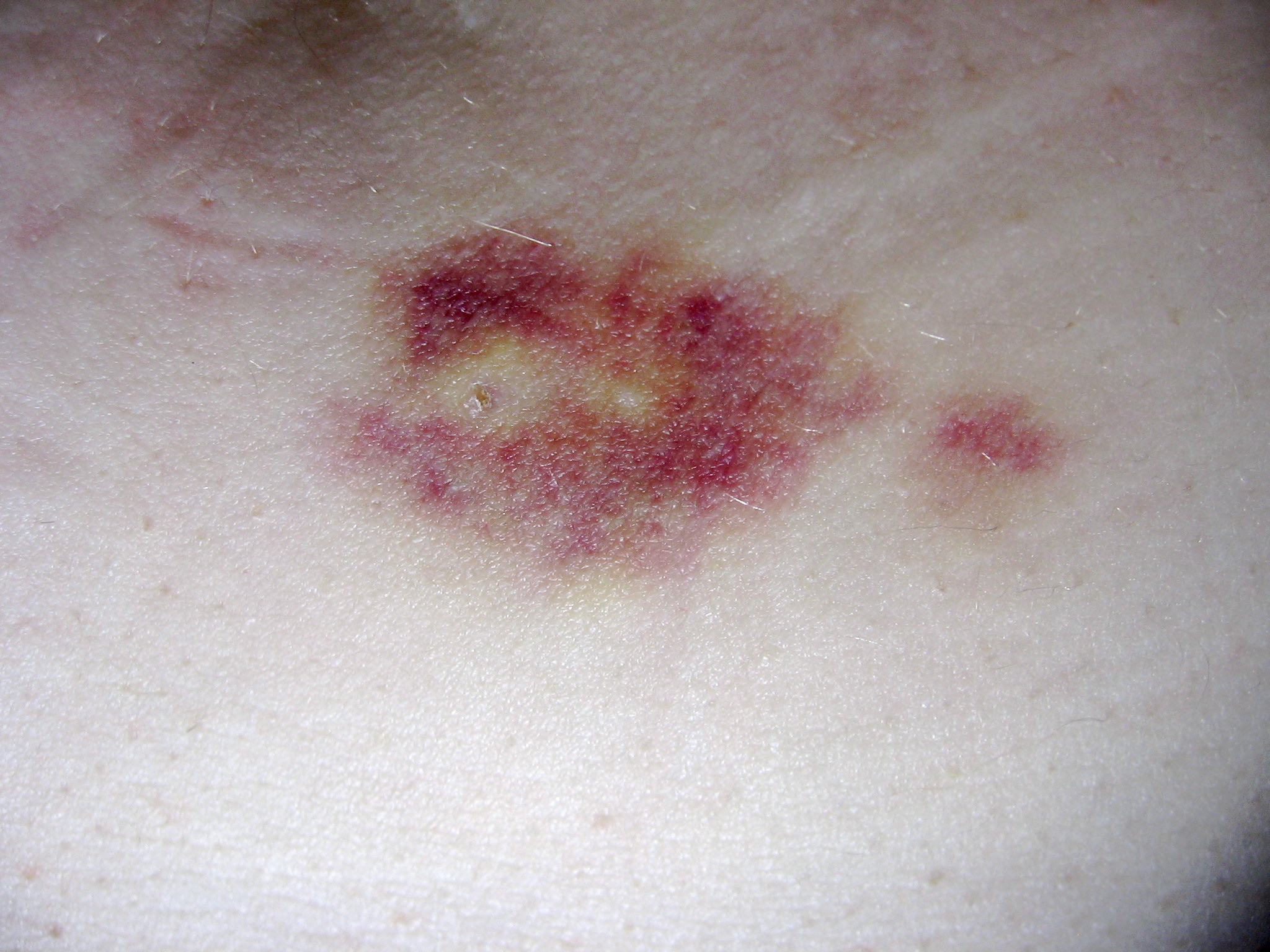|
Progressive Multifocal Leukoencephalopathy
Progressive multifocal leukoencephalopathy (PML) is a rare and often fatal viral disease characterized by progressive damage (''-pathy'') or inflammation of the white matter (''leuko-'') of the brain (''-encephalo-'') at multiple locations (''multifocal''). It is caused by the JC virus, which is normally present and kept under control by the immune system. The JC virus is harmless except in cases of weakened immune systems. In general, PML has a mortality rate of 30–50% in the first few months, and those who survive can be left with varying degrees of neurological disabilities. PML occurs almost exclusively in patients with severe immune deficiency, most commonly among patients with acquired immune deficiency syndrome (AIDS), but people on chronic immunosuppressive medications including chemotherapy are also at increased risk of PML, such as patients with transplants, Hodgkin's lymphoma, multiple sclerosis, psoriasis, rheumatoid arthritis, and other autoimmune diseases. Sig ... [...More Info...] [...Related Items...] OR: [Wikipedia] [Google] [Baidu] |
Virus
A virus is a wikt:submicroscopic, submicroscopic infectious agent that replicates only inside the living Cell (biology), cells of an organism. Viruses infect all life forms, from animals and plants to microorganisms, including bacteria and archaea. Since Dmitri Ivanovsky's 1892 article describing a non-bacterial pathogen infecting tobacco plants and the discovery of the tobacco mosaic virus by Martinus Beijerinck in 1898,Dimmock p. 4 more than 9,000 virus species have been described in detail of the millions of types of viruses in the environment. Viruses are found in almost every ecosystem on Earth and are the most numerous type of biological entity. The study of viruses is known as virology, a subspeciality of microbiology. When infected, a host cell is often forced to rapidly produce thousands of copies of the original virus. When not inside an infected cell or in the process of infecting a cell, viruses exist in the form of independent particles, or ''virions'', consisti ... [...More Info...] [...Related Items...] OR: [Wikipedia] [Google] [Baidu] |
HAART
The management of HIV/AIDS normally includes the use of multiple antiretroviral drugs as a strategy to control HIV infection. There are several classes of antiretroviral agents that act on different stages of the HIV life-cycle. The use of multiple drugs that act on different viral targets is known as highly active antiretroviral therapy (HAART). HAART decreases the patient's total burden of HIV, maintains function of the immune system, and prevents opportunistic infections that often lead to death. HAART also prevents the transmission of HIV between serodiscordant same sex and opposite sex partners so long as the HIV-positive partner maintains an undetectable viral load. Treatment has been so successful that in many parts of the world, HIV has become a chronic condition in which progression to AIDS is increasingly rare. Anthony Fauci, head of the United States National Institute of Allergy and Infectious Diseases, has written, "With collective and resolute action now and a ste ... [...More Info...] [...Related Items...] OR: [Wikipedia] [Google] [Baidu] |
Oligodendrocyte
Oligodendrocytes (), or oligodendroglia, are a type of neuroglia whose main functions are to provide support and insulation to axons in the central nervous system of jawed vertebrates, equivalent to the function performed by Schwann cells in the peripheral nervous system. Oligodendrocytes do this by creating the myelin sheath. A single oligodendrocyte can extend its processes to 50 axons, wrapping approximately 1 μm of myelin sheath around each axon; Schwann cells, on the other hand, can wrap around only one axon. Each oligodendrocyte forms one segment of myelin for several adjacent axons. Oligodendrocytes are found only in the central nervous system, which comprises the brain and spinal cord. These cells were originally thought to have been produced in the ventral neural tube; however, research now shows oligodendrocytes originate from the ventral ventricular zone of the embryonic spinal cord and possibly have some concentrations in the forebrain. They are the last c ... [...More Info...] [...Related Items...] OR: [Wikipedia] [Google] [Baidu] |
Axon
An axon (from Greek ἄξων ''áxōn'', axis), or nerve fiber (or nerve fibre: see spelling differences), is a long, slender projection of a nerve cell, or neuron, in vertebrates, that typically conducts electrical impulses known as action potentials away from the nerve cell body. The function of the axon is to transmit information to different neurons, muscles, and glands. In certain sensory neurons ( pseudounipolar neurons), such as those for touch and warmth, the axons are called afferent nerve fibers and the electrical impulse travels along these from the periphery to the cell body and from the cell body to the spinal cord along another branch of the same axon. Axon dysfunction can be the cause of many inherited and acquired neurological disorders that affect both the peripheral and central neurons. Nerve fibers are classed into three types group A nerve fibers, group B nerve fibers, and group C nerve fibers. Groups A and B are myelinated, and group C are unmyelin ... [...More Info...] [...Related Items...] OR: [Wikipedia] [Google] [Baidu] |
Myelin
Myelin is a lipid-rich material that surrounds nerve cell axons (the nervous system's "wires") to insulate them and increase the rate at which electrical impulses (called action potentials) are passed along the axon. The myelinated axon can be likened to an electrical wire (the axon) with insulating material (myelin) around it. However, unlike the plastic covering on an electrical wire, myelin does not form a single long sheath over the entire length of the axon. Rather, myelin sheaths the nerve in segments: in general, each axon is encased with multiple long myelinated sections with short gaps in between called nodes of Ranvier. Myelin is formed in the central nervous system (CNS; brain, spinal cord and optic nerve) by glial cells called oligodendrocytes and in the peripheral nervous system (PNS) by glial cells called Schwann cells. In the CNS, axons carry electrical signals from one nerve cell body to another. In the PNS, axons carry signals to muscles and glands or from sen ... [...More Info...] [...Related Items...] OR: [Wikipedia] [Google] [Baidu] |
Demyelinating Disease
A demyelinating disease is any disease of the nervous system in which the myelin sheath of neurons is damaged. This damage impairs the conduction of signals in the affected nerves. In turn, the reduction in conduction ability causes deficiency in sensation, movement, cognition, or other functions depending on which nerves are involved. Demyelinating diseases can be caused by genetics, infectious agents, autoimmune reactions, and other unknown factors. Proposed causes for demyelination include genetics and environmental factors such as being triggered by a viral infection or chemical exposure. Organophosphate poisoning by commercial insecticides such as sheep dip, weed killers, and flea treatment preparations for pets, can also result in nerve demyelination. Chronic neuroleptic exposure may cause demyelination. Vitamin B12 deficiency may also result in dysmyelination. Demyelinating diseases are traditionally classified in two kinds: demyelinating myelinoclastic diseases and dem ... [...More Info...] [...Related Items...] OR: [Wikipedia] [Google] [Baidu] |
Fingolimod
Fingolimod, sold under the brand name Gilenya, is an immunomodulating medication, mostly used for treating multiple sclerosis (MS). Fingolimod is a sphingosine-1-phosphate receptor modulator, which sequesters lymphocytes in lymph nodes, preventing them from contributing to an autoimmune reaction. It has been reported to reduce the rate of relapses in relapsing-remitting multiple sclerosis by approximately one-half over a two-year period. Medical uses Fingolimod is used in the treatment of the relapsing form of multiple sclerosis. Its effect in those with primary progressive MS is not clear. It may also be used in chronic inflammatory demyelinating polyneuropathy. Adverse effects The most common side effects of fingolimod have been head colds, headache, increased gamma-glutamyl transfer (≤15%), diarrhea (13%), nausea (13%), abdominal pain (11%) and fatigue. A few cases of skin cancer have been reported, which has also been reported in patients taking natalizumab (Tysabr ... [...More Info...] [...Related Items...] OR: [Wikipedia] [Google] [Baidu] |
Dimethyl Fumarate
Dimethyl fumarate (DMF) is the methyl ester of fumaric acid and is named after the earth smoke plant ('' Fumaria officinalis''). Dimethyl fumarate combined with three other fumaric acid esters (FAEs) is solely licensed in Germany as an oral therapy for psoriasis (trade name Fumaderm). Since 2013, it has been approved by the U.S. Food and Drug Administration (FDA) as a treatment option for adults with relapsing multiple sclerosis (brand name Tecfidera). In 2017, a new oral formulation of dimethyl fumarate (trade name Skilarence) was approved by the European Medicines Agency (EMA) for use in the European Union as a treatment for moderate-to-severe plaque psoriasis. Dimethyl fumarate is thought to have immunomodulatory properties without causing significant immunosuppression. Dimethyl fumarate has also been applied as a biocide in furniture or shoes to prevent growths of mold during storage or transport in humid climates. However, due to cases of allergic reactions after skin cont ... [...More Info...] [...Related Items...] OR: [Wikipedia] [Google] [Baidu] |
Prevalence
In epidemiology, prevalence is the proportion of a particular population found to be affected by a medical condition (typically a disease or a risk factor such as smoking or seatbelt use) at a specific time. It is derived by comparing the number of people found to have the condition with the total number of people studied and is usually expressed as a fraction, a percentage, or the number of cases per 10,000 or 100,000 people. Prevalence is most often used in questionnaire studies. Difference between prevalence and incidence Prevalence is the number of disease cases ''present ''in a particular population at a given time, whereas incidence is the number of new cases that ''develop '' during a specified time period. Prevalence answers "How many people have this disease right now?" or "How many people have had this disease during this time period?". Incidence answers "How many people acquired the disease uring a specified time period". However, mathematically, prevalence is propor ... [...More Info...] [...Related Items...] OR: [Wikipedia] [Google] [Baidu] |
Interferon Beta-1a
Interferon beta-1a (also interferon beta 1-alpha) is a cytokine in the interferon family used to treat multiple sclerosis (MS). It is produced by mammalian cells, while interferon beta-1b is produced in modified '' E. coli''. Some research indicates that interferon injections may result in an 18–38% reduction in the rate of MS relapses. Interferon beta has not been shown to slow the advance of disability. Interferons are not a cure for MS (there is no known cure); the claim is that interferons may slow the progress of the disease if started early and continued for the duration of the disease. Medical uses Clinically isolated syndrome The earliest clinical presentation of relapsing-remitting multiple sclerosis is the clinically isolated syndrome (CIS), that is, a single attack of a single symptom. During a CIS, there is a subacute attack suggestive of demyelination which should be included in the spectrum of MS phenotypes. Treatment with interferons after an initial att ... [...More Info...] [...Related Items...] OR: [Wikipedia] [Google] [Baidu] |
List Of Withdrawn Drugs
Drugs or medicines may be withdrawn from commercial markets because of risks to patients, but also because of commercial reasons (e.g. lack of demand and relatively high production costs). Where risks or harms is the reason for withdrawal, this will usually have been prompted by unexpected adverse effects that were not detected during Phase III clinical trials, i.e. they were only made apparent from postmarketing surveillance data collected from the wider community over longer periods of time. This list is not limited to drugs that were ever approved by the FDA. Some of them (lumiracoxib, rimonabant, tolrestat, ximelagatran and ximelidine, for example) were approved to be marketed in Europe but had not yet been approved for marketing in the US, when side effects became clear and their developers pulled them from the market. Some drugs in this list (e.g. LSD) were never approved for marketing in the US or Europe. Significant withdrawals Withdrawn clinical trial drugs *RG7795, ... [...More Info...] [...Related Items...] OR: [Wikipedia] [Google] [Baidu] |


.jpg)
